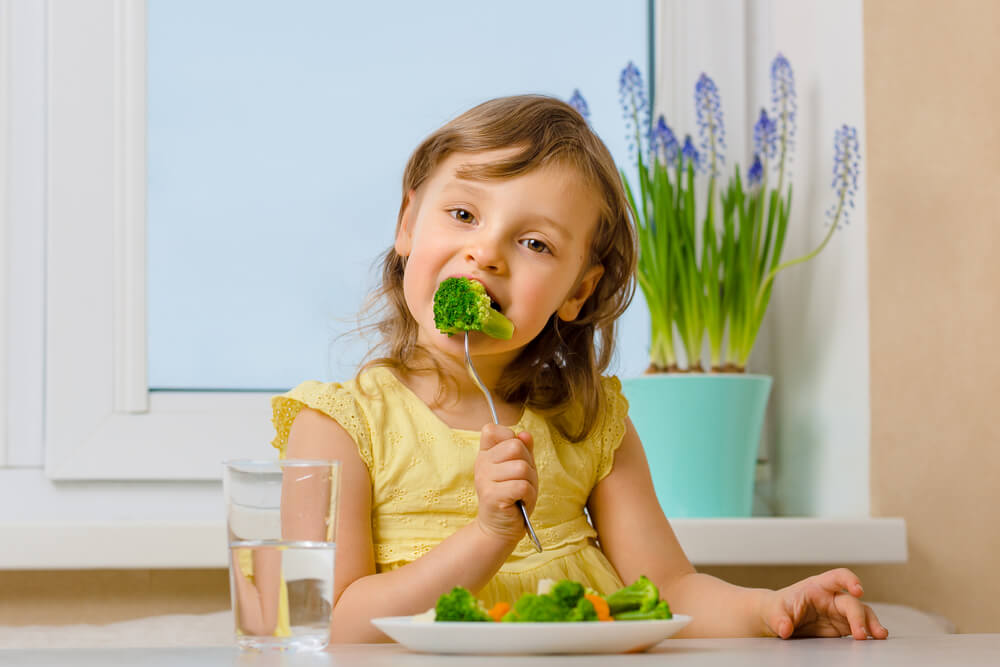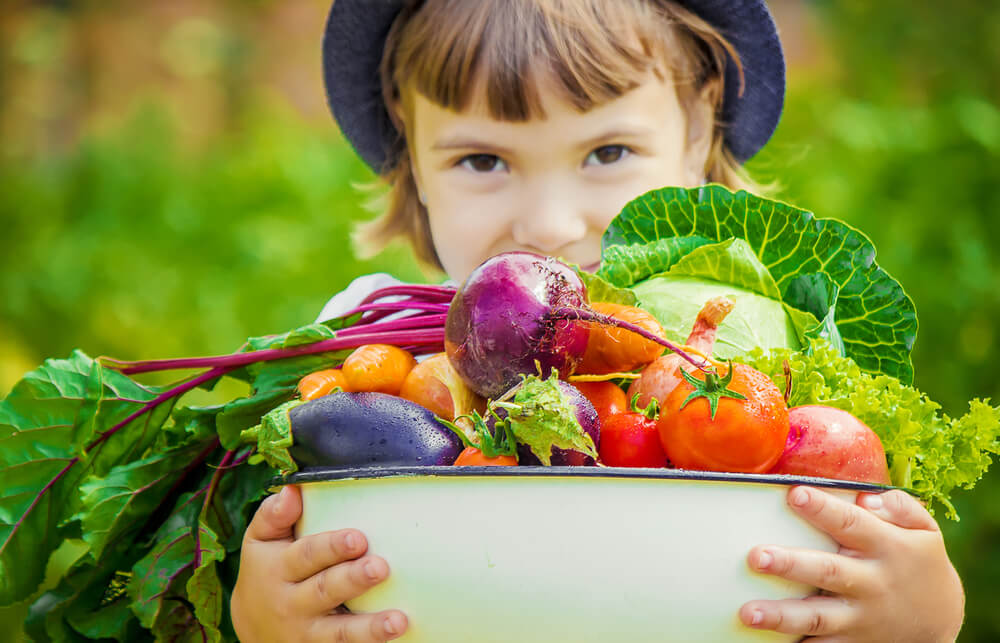Fruits and Veggies More Matters!
September is Fruits and Veggies More Matters month! This month, and every day, The Pediatric Endocrine and Metabolic Center of Florida encourages families to teach their children the importance of fruits and vegetables for kids to get the essential nutrients they need for their development, growth, and overall health.
You may be wondering how to get kids to eat veggies, or even trickier, how to get toddlers to eat veggies, so we at the pediatric center of the PEMC of Florida have put together some useful tips and tricks full of creative ways to get kids to eat vegetables.
Remember – children follow by example, so the process of getting fruits and vegetables for kids into their diet starts with you, the parent, or the caregiver! If you model for children and enjoy servings of fresh fruits and vegetables every day, you are showing them how to develop healthy eating habits from a young age. One of the first solid foods babies eat are fruits and vegetables, but as children become more independent and willful, wanting to assert their choices and decisions, eating fruits and vegetables for kids can get tricky. Here is how to help!
Do Not Worry
While it is easier said than done, parents and caregivers mustn’t worry too much if a child eats less fruit or veggies from time to time. By trying to force it, you can create an unhealthy cycle in which your child is bound to respond “no!” and create even more of an aversion. The best way to introduce fruits and vegetables for kids is to simply have a small portion of each group available on their plate.
You can even try cutting them into fun shapes! They may not eat it the first few times, but children are curious by nature and will eventually give it a try. Even a bite or two is a great way to introduce the item to their palate!
Health Benefits

Vegetables for kids are important to consume because they provide very important vitamins and minerals, such as folic acid and vitamin C. The same goes for fruit! Studies have shown that eating appropriate portions of both fruits and vegetables reduces the risk of heart disease, different cancers and improves overall health.
It is recommended to eat two fruits and five kinds of vegetables daily, but most people do not do this. To get the servings you need, especially when dealing with fruits or vegetables for kids, try blending them into a smoothie, soup, or sauce first. Any amount is better than none, and taste for both will be acquired over time.
How to Get Kids to Eat Veggies
There are many creative ways to get kids to eat vegetables and a few key steps to success in getting them to give fruits and vegetables a try. As it is Fruits and Veggies – More Matters Month, the pediatric center of Florida, or PEMC, is incredibly excited to share these tips on how to get kids to eat veggies and how to get toddlers to eat veggies. Here are some steps you can start implementing at home today:
Food Preparation and Planning
Involve your child in food preparation and planning by first letting them choose what fruits or vegetables are appealing to them at the grocery store or market, then again while preparing them at home. Let them touch, feel, see, and smell the fruit. The more curious they are, the more inclined they will be to take a bite! Allow your child to wash and prepare the fruits and vegetables, too.
Talk about the colors, how they feel (“is this soft or hard? What color or shape is this?”) to further expand their curiosity. Encourage your child to prepare a simple salad or package up their snacks for school. You can even count the pieces of fruits and vegetables to get them involved in the food prep process. Finally, if you are able, it is helpful to grow herbs or even vegetables/fruits at home to allow your child to nurture and water the plant as well. This will allow them to feel involved and form healthy habits around what they consume.
Talk About It!
Talk about how delicious the fruits and veggies are because kids love language! By saying things like “isn’t that juicy and sweet? Isn’t that carrot delicious and crunchy?” helps them to feel involved in the process. Try to enjoy meals together with your child too, because the more they see you eating and enjoying a wide variety of fruits and vegetables, the more likely they are to give it a try too. Children may be more open to trying something one day and refuse the same food item the next, and if mealtimes are stressful, they may be avoidant as well. We recommend focusing on the positives and avoiding negative exchanges or power struggles.
Presentation
Children deserve a beautiful presentation of their snack or meal, and they are attracted to well-ordered things because they crave it through their developmental needs. A creative way to get kids to eat vegetables is by laying them out on a plate in a shape or design or serving several different colors of fruits and vegetables to keep the options wide. If your child may not eat something whole like an apple or banana, try slicing it up or cutting it into fun shapes. We recommend keeping a bowl of fresh fruit on the counter as well. For picky eaters, try new fruit and/or vegetable once a week.
Make it Available
Another way how to get kids to eat veggies and how to get toddlers to eat veggies is by making the items available and easily accessible in your home. By incorporating healthy eating into your child’s life consistently, they will follow your lead. Always include fruits and veggies on your child’s plate, and have pre-packing fruit and vegetable to-go snack bags for lunches, after school, or a snack after a game or class. Include at least one fruit and vegetable in each meal, and practice adding more to familiar dishes, such as diced spinach in a pasta sauce.
Our pediatric center at the PEMC is happy to share these snack suggestions:
- Baked sweet potato or squash, whole or sliced
- Corn, diced or on the cob
- Soups, such as minestrone
- Homemade popcorn without butter or salt
- Vegetables, sliced
- Salsa or yogurt dip with veggies/fruit
- Muffins with veggies or fruits
- Frozen fruit or vegetables
- Smoothies or juices
- Homemade, sugar-free granola
- Fruit skewers
- Avocado, tomato, and cucumber salad
- Fruit salad
- Fruit platter
- Dried fruit

Do Not Give Up
Regardless of whether your child consumes the entirety of their meal or just a portion of the snack, keep offering a consistently diverse variety of fruits and vegetables. By making them available in their daily life, children can learn or re-learn how to enjoy them or even give them a try. Let them decide whether or not to eat them, but keep encouraging them to try. When children are most hungry, such as before a meal, this is a great time to offer them raw and crunchy vegetables. Finally, teach your child to accept the meal offered by avoiding alternative options or offerings during mealtimes. Keep choices down to two if absolutely needed.
Variety
Whether they are raw or baked, soft or crunchy, steamed or boiled, pan-seared or roasted, frozen or temperate, tinned, fresh or dried, all of these healthy fruit and vegetable choices are valuable. If you keep a wide variety available for your child, they will without a doubt begin trying more and more healthy food options. To maintain variety and keep things cost-effective, try eating fruits and vegetables in season and purchase from your local farmers’ market if it is available. When an item is not in season, you can purchase it frozen for soups and smoothies.
Things to Remember
For Fruits and Vegetables Month More Matters! Our pediatric center recommends avoiding the following fruit and vegetable mishaps. Avoid purchasing or keeping fruit juices, potato chips, fruit bars, cans of fruit, veggies, or beans with added salt and sugar, and other processed foods out of your home. There are often additives in these food items, significantly added refined sugars, that can form bad habits and cause health issues over time, especially in the teeth.
The pediatric center recommends purchasing, preparing, and eating whole food for higher vitamin and valuable nutritional content. Always wash fruits and vegetables before consuming them to remove pesticides and contamination. Give us a call or visit our website today to learn more about health tips and tricks for your family and schedule a well visit with one of our amazing, compassionate, and highly skilled pediatric physicians at the PEMC of Florida!


